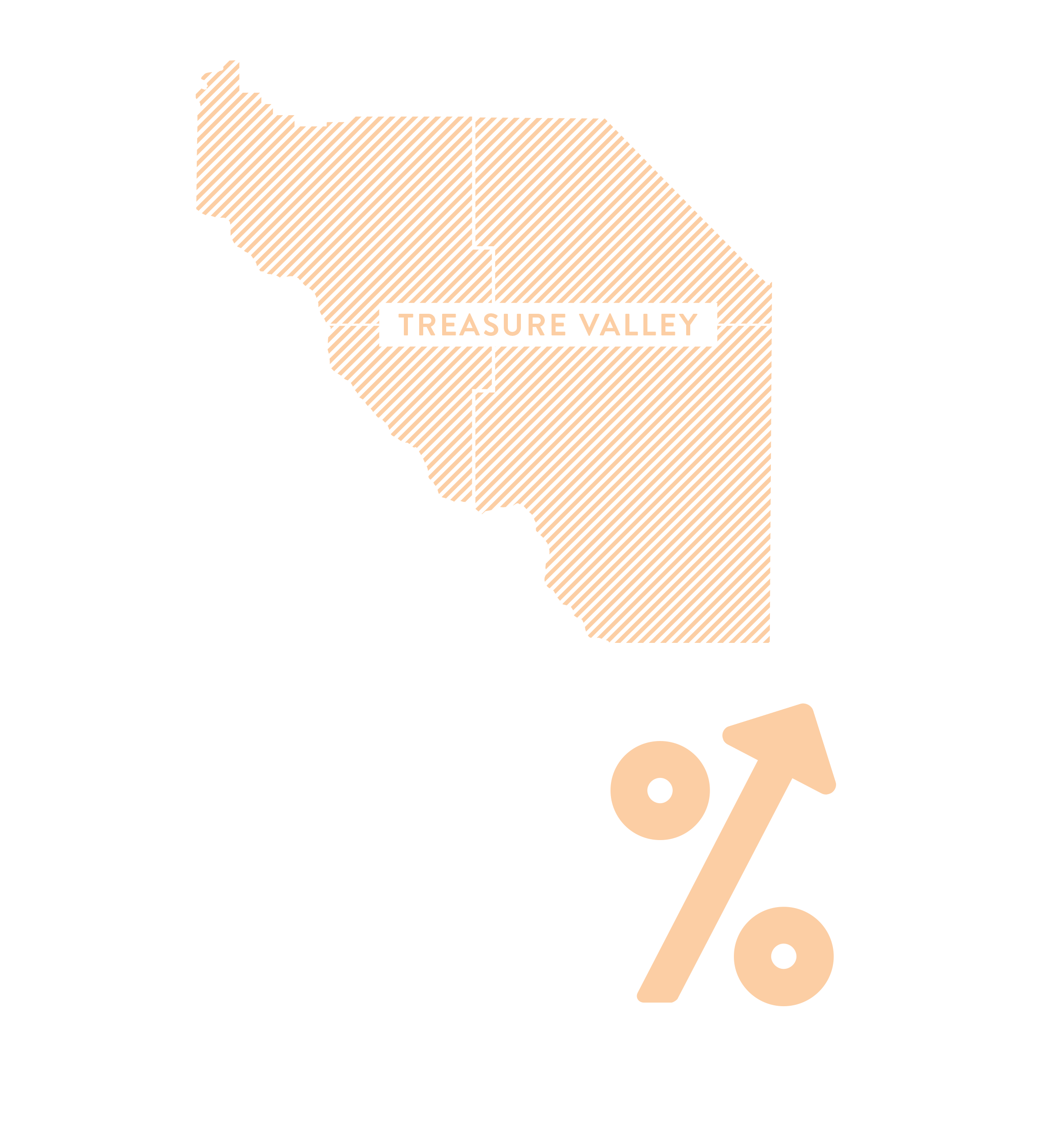
Growth
It seems that everywhere you look in Ada and Canyon Counties, there’s new construction – subdivisions, infill in established neighborhoods, and condos near downtown centers. The Treasure Valley is experiencing growth in population, housing, and employment, and COMPASS estimates that this trend will continue through 2040.
POPULATION
The Treasure Valley's population is estimated to grow by almost 53% between 2018 and 2040, from 688,000 to 1.022 million. This CIM 2040 2.0 plan explores how the area can accommodate this growth while balancing the valley's quality of life.
HOUSEHOLDS
Current estimates show a 61% increase in the number of Treasure Valley households by 2040. In 2018, there are approximately 248,400; by 2040, 400,000. Planners and developers must consider what types of housing to build, and where, to best meet these demands and provide transportation choices for access to employment, recreation, and more.
EMPLOYMENT
The Treasure Valley could see explosive job growth—an increase of 86%—by 2040. This plan takes a look at the need for efficient freight networks and strategic positioning of employment centers in order to support a healthy economy.

The CIM 2040 Vision
Changes to the way we live, work, and travel are inevitable. However, they should not take us by surprise.
The CIM 2040 Vision, developed for the original CIM 2040 plan in 2012 and updated yearly to reflect current data, illustrates where we expect to see housing, jobs, and other development in Ada and Canyon Counties by 2040.
COMPASS uses this vision, along with additional demographic data and forecasts, to coordinate and plan for future transportation, land use, and other needs. We also constantly monitor growth and demographic trends to prepare for and adapt to changing circumstances.
Putting data to work
In CIM 2040 2.0, current and forecasted demographic data are used to help plan for future transportation needs, such as:
- How will people get from home to work, school, shopping, or recreation?
- How do we ensure that the future transportation system will support economic growth?
- How can the transportation system serve the varying needs of different generations?
- As we grow, how can we coordinate efforts across the region to ensure a variety a transportation options — car, bus, bike, and more — for all residents?


